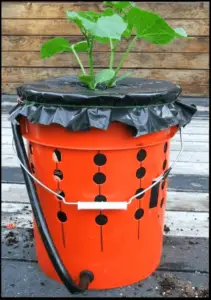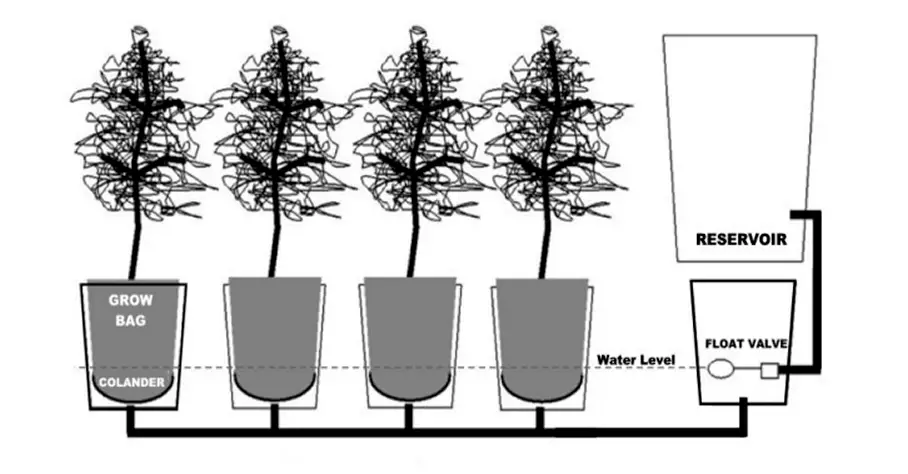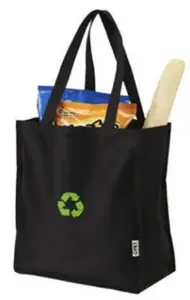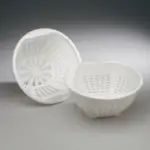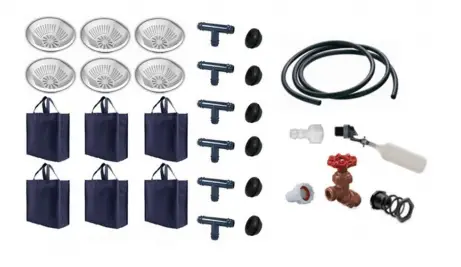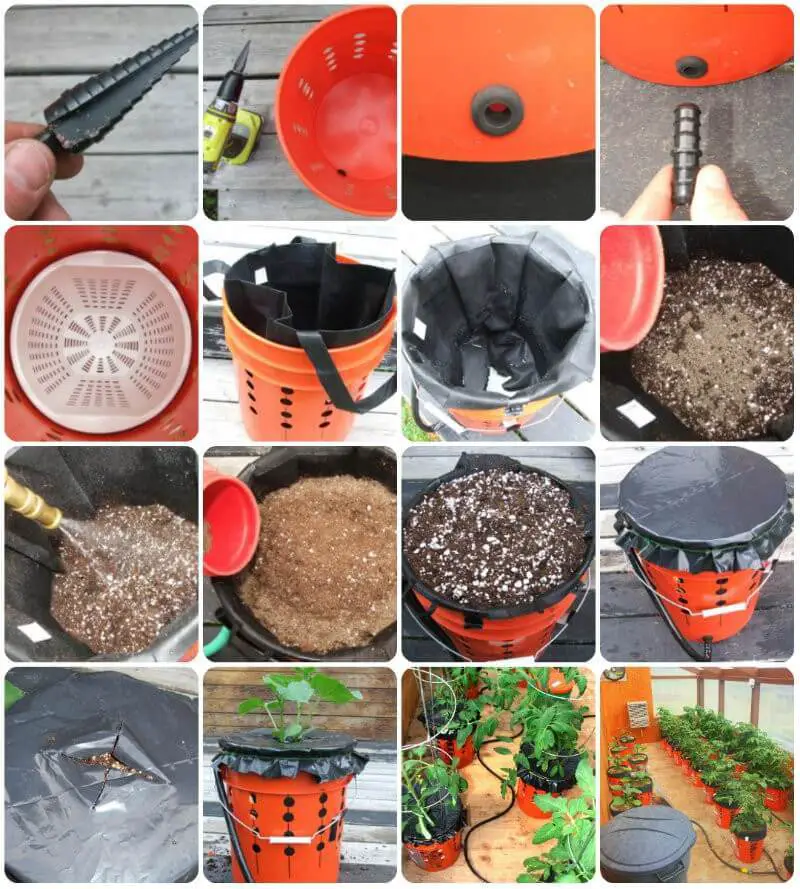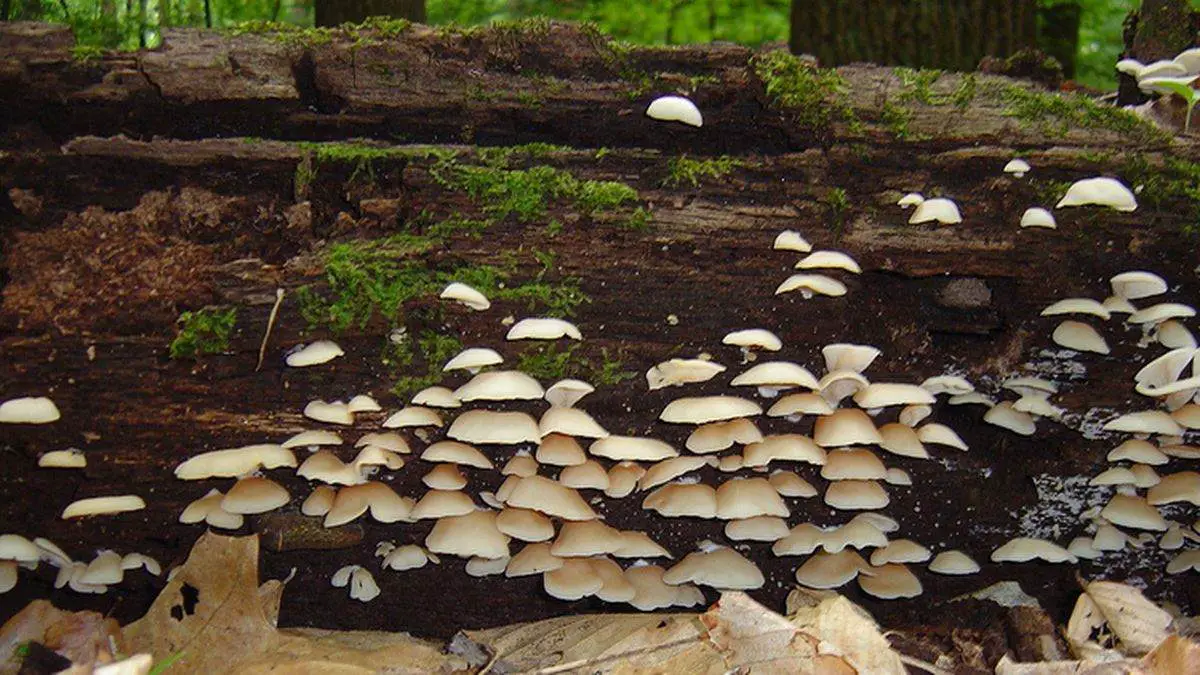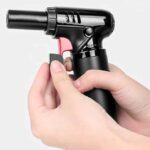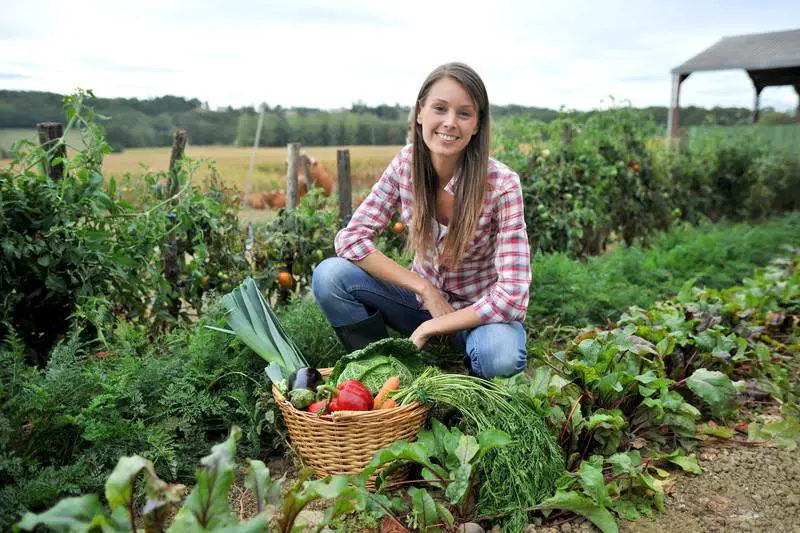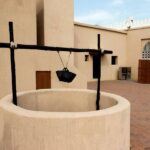Table of Contents
My Italian grandmother always had good bits of advice. One of them is, “You can never have too many tomato plants, but what happens when you run out of room in the garden.
Tomatoes are probably the most versatile plant you can grow; they are used in everything from Tomato Sauce to Ketchup, Espagnole Sauce to Bloody Marys (Yum!).
Growing tomato plants in 5-gallon buckets are nothing new. My relatives would grow them on their front porches for decades.
What is somewhat new and unique is having self-watering tomato buckets that are practically maintenance-free.
Imagine growing beautiful, full tomato plants and only having to refill a reservoir once a week. I don’t know about you, but my wife hates when we go away for a week and all I can say is “I wonder how my plants are doing”.
Here on the homestead, we try to maximize as much space as we can. About a year ago, I was just fiddling around when I came across an obscure website called Alaska Grow Buckets.
What they offered was an ingenious and SIMPLE way to make your self-watering buckets from stuff you probably have hanging around the house or garage. The concept is so straightforward, that it borders on genius.
How It Works
The process is quite simple. The tomatoes are planted in a wicking medium that draws water from below and sends it to the plant’s roots.
The water is drawn from another drum or garbage can and is released by a float valve. When the water level drops, it activates the valve, instantly irrigating your plants.
You can build this system as small or as large as you wish. Another nice thing is that you are not only limited to tomatoes. You can grow peppers, okra, cucumbers, and more. Think of the possibilities.
The second key to this design is the fabric grow bag. The bags I use can be found at most supermarkets and are very inexpensive or free.
The bags are made from spun polypropylene and should last for several years. Similar grow bags are available from nursery and garden suppliers.
Canvas or burlap bags may also work – but they will eventually rot and fall apart.
The porous fabric allows excess water drainage and aeration of the root zone which is necessary for optimal growing conditions.
The system is also based on the principle of “air root pruning.” As roots grow out to the porous fabric, they become exposed to air, dry out and die.
This causes the plant to produce dense, fine feeder roots and prevents root circling. The increase in fine feeder roots leads to better nutrient and water absorption and promotes accelerated plant growth.
The third key to this system is a plastic kitchen colander that will hold the fabric shopping bag off of the bottom of the bucket and create a shallow water reservoir in each grow bucket.
Almost any large plastic colander can be trimmed to fit inside a 5-gallon bucket with a strong pair of shears. The colander included in all Alaska Grow Buckets kits fits perfectly without trimming.
The fourth key to this system is the 5-gallon support bucket with plenty of ventilation holes around the sides. The bucket helps support the fabric bag, and the ventilation holes allow adequate air movement.
This allows oxygen to reach the root zone, which is essential for optimal plant growth. The bucket also acts as a water reservoir below the bag providing a water source for the wicking grow medium.
By maintaining the proper water level with the float valve regulator, the medium will never dry out and will continuously wick moisture up to the root zone.
Materials List
1. 5-gallon Plastic Bucket
2. 1/2″ rubber grommet
3. 10″ plastic Colander
4. Fabric shopping bag
I strongly encourage gardeners to find and re-purpose used buckets whenever possible and help us to keep plastic containers out of our landfills.
Look for the Type 2 HDPE symbol on the bottom to indicate that plastic is safe to use for growing vegetables.
Many bakeries and restaurants have free or very low-cost buckets available. Free-used buckets are a great way to save. I get new 5 Gallon buckets from Home Depot at a very low price.
You can find rubber grommets, barbed fittings, vinyl tubing, and other parts from many online or local garden suppliers. The fabric grows bags that I use are available at many supermarkets.
Material Kit Includes – Most large plastic colanders can be trimmed to fit in a bucket.
All Alaska Grow Buckets kits come with special colanders that fit inside a 5 Gallon bucket without trimming. Complete Alaska Grow Bucket material kits are available here.
Tools
1. 3/4″ Step Drill bit
2. Electric drill
3. Heavy shears or snips if you need to trim a plastic colander.
Construction
- Drill a series of 3/4 inch holes in the bucket as illustrated. Drill as many holes as you like starting 6 inches from the bottom of the bucket. These holes and the porous fabric bag provide air to the root system, which is the key to this design.
- The lower portion of the bucket has only one opening. This is the water reservoir. You will drill one hole at the bottom with your step drill bit for your fill hose fitting.
- Add a 1/2-inch barbed hose fitting to the grommet. This should provide a snug, watertight fitting. Your fitting may differ depending on how you connect your buckets – 1/2 inch barbed fittings are available from hydroponic suppliers.
- Place the special Alaska Grow Buckets plastic colander inside your bucket or trim other colanders to fit.
- Place the fabric bag inside the bucket. I trimmed off the shopping bag handles.
- Plug the fill hole and add water to the bottom of your bucket and begin adding your growing mix.
- Fill the bucket in layers and soak each layer well to activate the wicking property of your soilless mix. The dry mix will not work.
- Add a layer of slow-release natural fertilizer to the bottom layer of grow mix.
- You should add a ring of fertilizer near the top.
- Continue adding layers of grow mix and wetting down with water.
- A plastic sheet is added to reduce water loss through evaporation.
- Cut slits in plastic for planting.
- I chose a nice-looking Alaska-grown cucumber that I purchased from a local garden center to test my design.
- The bucket was attached to my greenhouse auto-fill reservoir system.
The key to setting up an Alaska Grow Bucket multi-container system depends on a simple float valve regulator and a bulk reservoir for automatic watering.
Potting Mix for Self-Watering Buckets
Don’t compromise with the quality because you need to harvest good and big tomatoes. That’s why I advise you to only use a premium potting mix that has slow-release fertilizer. Tomatoes need a slightly acidic to neutral pH and you need to analyze your garden soil before sowing the seeds. This step is very important and plays a crucial role in determining the quality of the harvest you make.
Chemical Free Pest Control
For instance, In Australia, there is a pest called fruit fly which is responsible for the loss of millions in the fruit industry. It rots the fruit over time if proper pesticide control is overlooked. Often, to prevent this, some use certain chemicals which is not good for the crops.
I prefer netting and covering the fruits properly before they start to ripen. This method protects the tomatoes from the fruit flies laying eggs in them. After laying eggs on the tomato, the little maggots serve on the tomato and hence, rot the fruit.
Float system
You can add as many Grow Buckets in your system as space allows, but remember to leave enough space for the plants to grow with adequate air movement for ventilation and remove excess humidity.
Overcrowding impedes ventilation, promotes fungal disease spread, and blocks light transmission within the plants.
You can add nutrients in the form of a dry natural slow-release fertilizer added to the growing mix or a water-soluble nutrient added to the water reservoir.
Any hydroponic reference guide will give nutrient requirements for specific plants.


